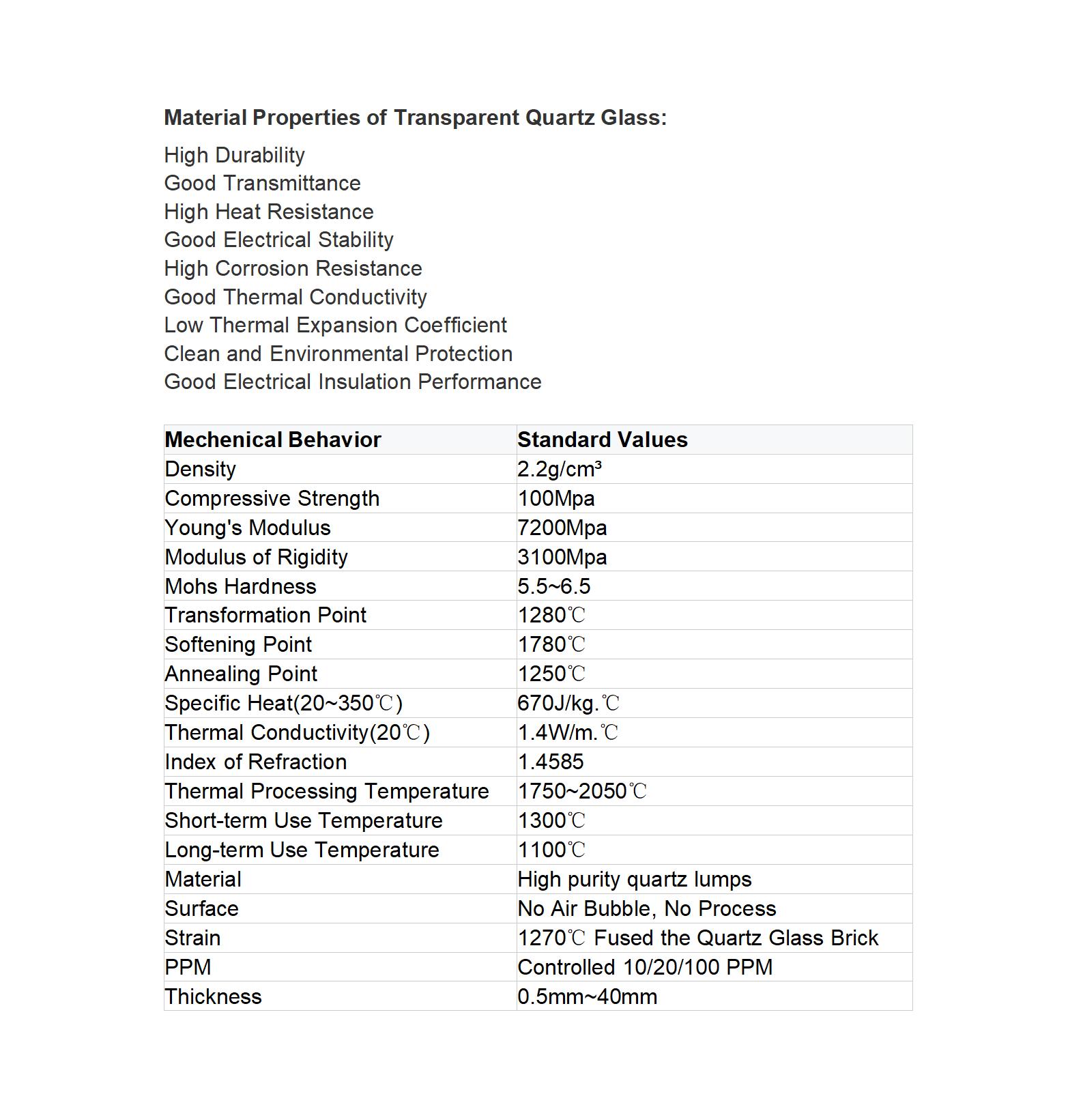T: +86-518-85528012
E: nick@luverrequartz.com
E: nick@luverrequartz.com
1st floor Runlian industrial center No. 116 QuFeng Rd., Haizhou Economic and technological development zone Lianyungang City, Jiangsu Province, China 222062
Optical instrument quartz glass window
Quartz glass window is an optical component used to protect sensors and other electronic instruments from environmental conditions.
LUVERRE quartz
Inner with Vacuum PVC bag and then wrapped with air bubble film, outer with wooden box.
as per customer's requirement
| Availability: | |
|---|---|
Optical instrument quartz glass window
Quartz glass window is an optical component used to protect sensors and other electronic instruments from environmental conditions. This type of glass window typically has a flat, parallel, and transparent optical surface that can transmit a spectral range from deep ultraviolet to far-infrared. The selection criteria for quartz glass windows include the material's transmission characteristics, scattering, strength, and resistance to specific environments. In order to improve the transmission performance of specific wavelengths, these windows can be optically polished and coating technologies such as anti reflective films (AR) or scratch resistant films (AS) can be applied.

Quartz glass itself is a special industrial technology glass made by melting pure natural quartz. It has a very small coefficient of linear expansion, about 1/10 to 1/20 of ordinary glass, exhibiting good thermal shock resistance and heat resistance. Quartz glass has very high heat resistance, typically used at temperatures ranging from 1100 to 1200 ° C, with short-term use temperatures reaching up to 1400 ° C. Due to its high spectral transmittance, it will not be damaged by radiation exposure (other glass will darken after radiation exposure), making it an ideal choice for spacecraft, wind tunnel windows, and spectrophotometer optical systems.

Quartz glass windows play a crucial role in various optical instruments due to their excellent optical performance and heat resistance, especially in environments that require high transmittance and high temperature and pressure resistance.
Optical instrument quartz glass window
Quartz glass window is an optical component used to protect sensors and other electronic instruments from environmental conditions. This type of glass window typically has a flat, parallel, and transparent optical surface that can transmit a spectral range from deep ultraviolet to far-infrared. The selection criteria for quartz glass windows include the material's transmission characteristics, scattering, strength, and resistance to specific environments. In order to improve the transmission performance of specific wavelengths, these windows can be optically polished and coating technologies such as anti reflective films (AR) or scratch resistant films (AS) can be applied.

Quartz glass itself is a special industrial technology glass made by melting pure natural quartz. It has a very small coefficient of linear expansion, about 1/10 to 1/20 of ordinary glass, exhibiting good thermal shock resistance and heat resistance. Quartz glass has very high heat resistance, typically used at temperatures ranging from 1100 to 1200 ° C, with short-term use temperatures reaching up to 1400 ° C. Due to its high spectral transmittance, it will not be damaged by radiation exposure (other glass will darken after radiation exposure), making it an ideal choice for spacecraft, wind tunnel windows, and spectrophotometer optical systems.

Quartz glass windows play a crucial role in various optical instruments due to their excellent optical performance and heat resistance, especially in environments that require high transmittance and high temperature and pressure resistance.